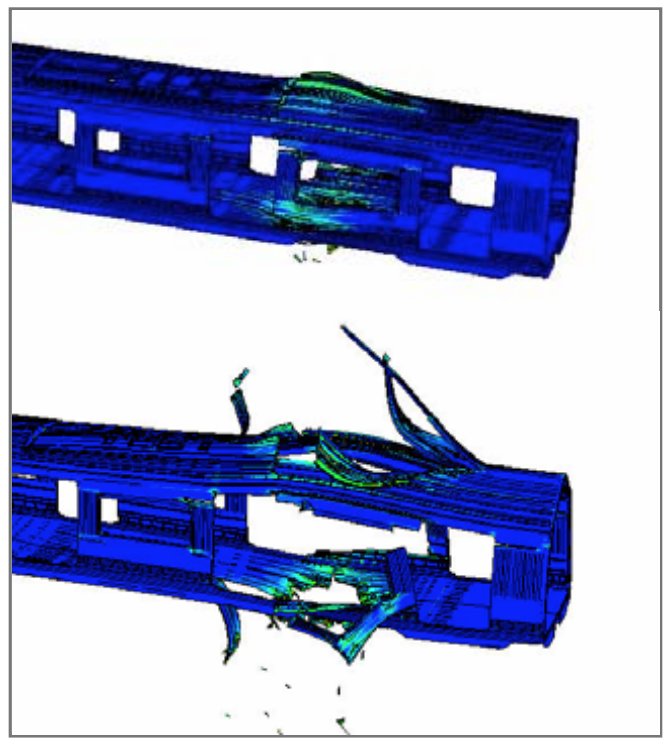-
Client
Confidential
-
Business need
To assess the likely damage caused to an enclosed vehicle structure by an internal explosion
-
Why Frazer-Nash?
Frazer-Nash has a vast experience in the modelling of the blast response of systems (including vehicles, buildings and humans)
The challenge
The threat to major public transport systems, including rail and aircraft, is on the increase. Structural damage caused by an explosion inside a vehicle can be catastrophic, as well as causing serious and potentially fatal injuries to the passengers within. To develop protection systems that might mitigate the effects of such an attack, our client needed to assess the potential damage likely to occur following an explosion.
Frazer-Nash was appointed to conduct a detailed analysis of an internal blast within a train carriage, and simulate the conditions during an explosion. The aim was to produce essential data that could predict the level of structural damage sustained by the vehicle.
Our solution
Explicit calculation of the development and propagation of blast pressure following an explosion within a structure can be a challenge due to the complexity and resolution of the model required.


